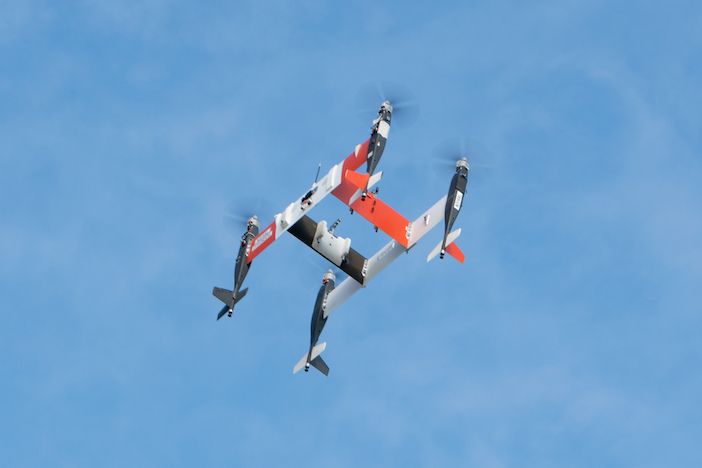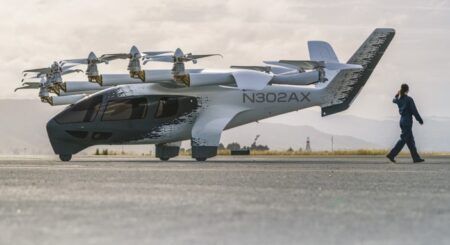The prospect of autonomous aircraft in our skies has moved forward after test campaigns for radar-based detect and avoid systems achieved key milestones in the USA.
The use of future autonomous air vehicles, such as drones and eVTOL air taxis, sometimes called Advanced Air Mobility (AAM), will only be possible if beyond visual line of sight (BVLOS)-operational capability is developed and demonstrated as safe to aviation authorities.
A fundamental part of BLVOS-operations is autonomous detect and avoid (D&A) technology. D&A technology enables aircraft to avoid unforeseen objects in the air, including those without transponders such as hobby drones or kites.
One way of achieving this is to use cameras and computer vision algorithms. Iris Automation’s Casia I and Casia X, which uses a 360˚ camera system, has been available since last April and is fitted on board aircraft to provide D&A functionality.
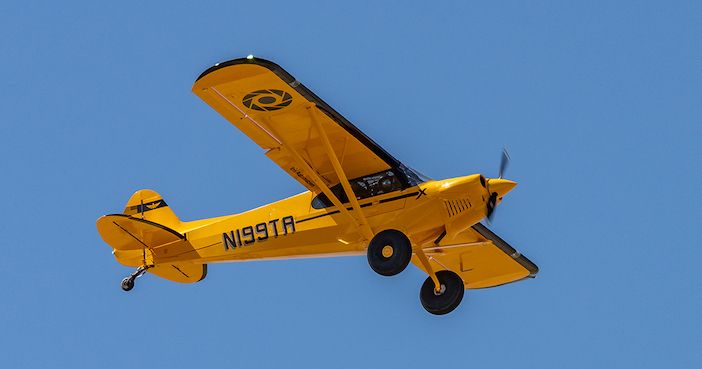
Iris, which has developed and tested its technology over the last seven years, also offers a ground-based version called Casia G that uses the same technology.
Radar-based D&A systems work differently from camera-based systems. They can use data from multiple sources, including ground-based radar and radar fitted to aircraft, to detect objects in the air and issue commands that avoid collisions.
D&A capability using radar in the air has proved challenging to deliver. The radar must have a long range because of the high speeds involved and be capable of picking out airborne traffic from ground clutter, including moving cars. They also require precise location information to make sense of radar echoes.
Honeywell detect and avoid testing
Two different testing programs for radar-based D&A systems have recently successfully concluded in the USA.
One in Phoenix, Arizona tested Honeywell’s IntuVue RDR-84K radar system and one in Fort Worth, Texas demonstrated Bell’s QuantiFLYTM system. Both systems autonomously changed the course of a drone when an aircraft on a collision course was detected during test flights.
Honeywell said the recent testing of its IntuVue RDR-84K showed that the radar can detect airborne traffic and decide autonomously on a course of action without human intervention for the first time.
Sapan Shah, product manager, advanced air mobility at Honeywell Aerospace said, “We set up the ultimate game of chicken, but the RDR-84K simply wouldn’t let these aircraft get into danger.
“This is a leap forward in safety that could have far-ranging impacts across aviation.”
Non-cooperating traffic
Pilots and air traffic control rely on cooperative aircraft to beam out their locations using onboard transponders. Objects without transponders — hobby drones, kites, birds and aircraft with broken transponders — are known as “non-cooperating” traffic.
According to Honeywell, the testing in Arizona showed that the RDR-84K can detect non-cooperating traffic while mounted on helicopters and drones.
With both drones on autopilot, Honeywell engineers flew two quadcopter drones directly at each other 300 feet above the ground at a test site in the desert.
During several test flights, the drone equipped with the RDR-84K detected the non-cooperating “intruder” drone and evaluated its flight path. Then it calculated an avoidance maneuver and took over navigation — flying left, right, up, down or stopping midair, depending on winds and other factors.
Once the danger of a collision had passed, the radar released control of the drone, and the autopilot guided it back to its original course.
The team then challenged the RDR-84K with increasingly difficult encounters, such as approaching from below to blend into ground clutter and from offset angles, testing the radar’s peripheral vision and high angular detection capabilities. In other flights, the team instructed the radar to wait longer before acting, forcing it to make more aggressive maneuvers.
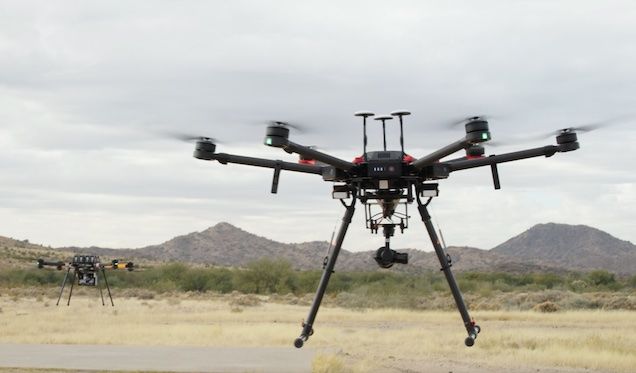
“The radar handled everything we threw at it,” Larry Surace, lead systems engineer for the RDR-84K, Honeywell Aerospace, said. “It saw the danger immediately and successfully executed multiple avoidance maneuvers.”
The small RDR-84K radar features an onboard processor uses monopulse technology, a system of overlapping beams that increases accuracy and eliminates ground clutter to see targets up to 3km (2 miles) away. The radar steers its beams electronically, so it has no moving parts.
Bell tests ground-based system
Meanwhile, in Fort Worth, Texas helicopter manufacturer Bell has been testing its ground-based D&A technology using its Autonomous Pod Transport’s (APT) in a similar way.
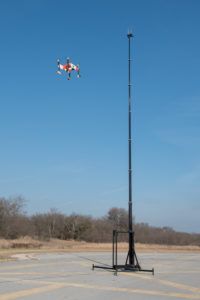
The testing was an extension to a NASA research program called the Systems Integration and Operationalization (SIO) project that concluded last year. According to Bell, the recent tests demonstrated its technology’s capability to integrate with ground-based radar systems.
The objective of the SIO demonstration was to execute a BVLOS mission in complex airspace using D&A technology to monitor the airspace for natural intruders using Bell’s 429 commercial helicopter and the APT unmanned aircraft.
Bell’s QuantiFLYTM system, a new aircraft communication unit powered by Truth Data that offers automatic flight data monitoring (FDM), was used on the Bell 429 to record aircraft telemetry data.
Matt Holvey, director of intelligent systems at Bell said, “We are excited to demonstrate the effectiveness of ground-based monitoring solutions as part of UAS [unmanned aerial systems] infrastructure.
“Radar monitoring, whether airborne or ground-based, may become an important part of drone delivery, air taxi services and other aspects of the ever-expanding AAM ecosystem.”
Local partners
Engineers used radar systems to monitor the complex airspace within the AllianceTexas Mobility Innovation Zone (MIZ) and track manned and unmanned aircraft systems.
Local aviation firm Hillwood also provided multiple sites for radar set up, and testing was conducted at the AllianceTexas Flight Test Center, located four miles (6.4km) north of Fort Worth Alliance Airport.
“We are honored to partner with Bell to launch the testing initiatives as they work with NASA to lay the foundation for the future of budding air technologies,” said Christopher Ash, senior vice president of aviation business development for Hillwood. “The data they receive from these efforts will enable the industry to advance the commercialization of this technology across multiple platforms.”
In addition, Microsoft provided AirSim, a simulation tool for training autonomous systems, which gave Bell a Digital Twin environment to model the NASA SIO Extension flight in the virtual world before flying through the corridor. This allowed the team to conduct simulated real-world tests of the APT aircraft across a broad range of scenarios without any safety risks and at a fraction of the cost and time needed.
Read more about radar-based detect and avoid systems in this in-depth article features in December 2021’s Aerospace Testing International here. Subscribe to our print magazine here.
Related stories
Bell tests modified design of its APT logistics drone in Canada
Autonomous cargo aircraft – the roll-out has already begun
Iris and Applied Aeronautics integrate detect and avoid on latest drone enabling BVLOS


